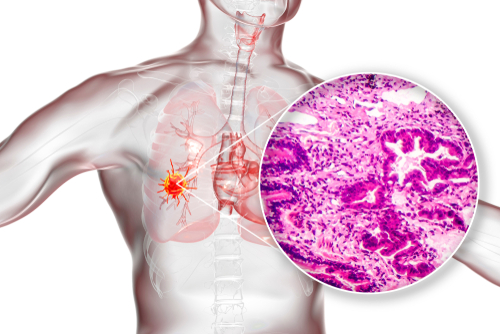
START domain-containing proteins (STARDs) are helpful prognostic and diagnostic biomarkers in patients with lung adenocarcinoma, specifically STARD12 and STARD14.
Recent study findings showed that STARD5/10/14 were overexpressed in lung adenocarcinoma compared with normal samples, while STARD4/7/8/11/12/13 were low. Moreover, STARD5/12/14 levels were positively related to clinical and lymph node stage.
Researchers, led by Wen-Di Zhang, determined that STARD12/14 have the greatest potential of being specific biomarkers of the disease. Of interest, high STARD12 expression was associated with better overall survival (OS), disease-specific survival (DSS), and disease-free survival (DFS). However, patients with STARD14 had significantly worse OS, DSS, and DFS.
In addition, STARD12 and STARD14 were associated with glycolysis, oxidative phosphorylation, and tumor-related signaling pathways. The analysis also found that both STARD12 and STARD14 were co-related with epigenetic regulation, including TP53 mutation and m6A modification. There was a negative correlation between the expression levels of STARD12 and tumor mutation burden.
Furthermore, levels of STARD12 were significantly associated with an abundance of infiltrating immune cells, such as B cells, CD8+ T cells, macrophages, dendritic cells, and chemokine. Although STARD14 was negatively associated with the infiltration of CD8+ T cells, there was a positive association with CCL28 and immune checkpoints.
Several online databases were used in the analysis, including The Cancer Genome Atlas.
“STARD12 served as a protective gene in [lung adenocarcinoma], while STARD14 was an oncogene, [and both] were associated with epigenetic regulation, immune infiltration, as well as ferroptosis,” the authors wrote.







 © 2025 Mashup Media, LLC, a Formedics Property. All Rights Reserved.
© 2025 Mashup Media, LLC, a Formedics Property. All Rights Reserved.